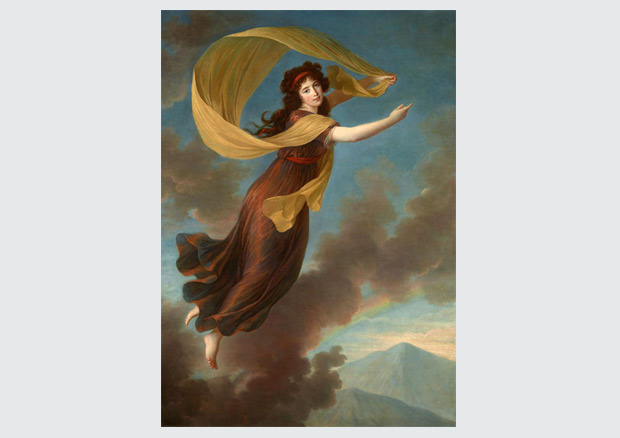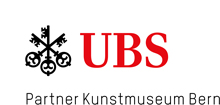LIECHTENSTEIN The Princely Collections
To its visitors the Kunstmuseum Bern is opening the doors to the collections of the Princes of Liechtenstein, one of the most magnificent private collections in the world. Over generations the Liechtenstein dynasty has been accruing paintings, prints and drawings, sculptures, tapestries, as well as other artisanal objects. In this way it has created a private collection that is internationally one of the most outstanding of its kind. Our large-scale exhibition offers wonderful insights into this illustrious world.
The Liechtenstein dynasty is one of the oldest of the European nobility. It rose to distinction from the 12th century onward. In 1608 the first member of the family was elevated to the rank of prince, which then was passed over the generations. Today this family counts over one hundred members, only some of which live in the Principality of Liechtenstein. The Princely Collections of Liechtenstein, as they exist today, are the product of an unbroken passion for collecting that extends over four hundred years. They bear the stamp of the individual princes of the Liechtenstein dynasty – each with their particular preferences and dislikes – so that the holdings have undergone changes over the years. Works of art have been bought, swapped, sold, given away as presents, or even repurchased. The scope and diversity of the holdings are correspondingly great, spanning the time from the Gothic ages and the Early Renaissance through the Baroque period to the Biedermeier style. Currently the collections comprise some 1700 paintings, valuable Italian bronzes, as well as impressive pieces of pietra dura work, enamels, carved ivory, porcelain, tapestries, and furniture, which was all once part of the decorations and fittings of the family residences.
In 1705 Johann Adam Andreas I, Prince of Liechtenstein (1657-1712), had most of the works of art assembled together at the family’s City Palace in Vienna (today Bankgasse). Under Prince Johann I (1760–1836), roughly one hundred years later, the collections were opened to the public in what is known as the Garden Palace in Vienna’s Rossau quarter, and in 1810 they were made accessible to the public as part of a museum. Following an interruption due to the war, today part of the collections can still be viewed in this impressive palace from the baroque period. Since April 2013, subsequent to elaborate renovations, you can even visit the City Palace in the framework of a guided tour booked in advance. The Liechtenstein family, who transferred their place of residence to Vaduz after the Nazis annexed Austria in 1938, continued their collecting activities through to today, pursuing the goal of preserving and augmenting their prestigious collection.
For the exhibition in Bern over 200 works of art were selected from the immense holdings of the collections. The show is spread over two levels of the Kunstmuseum exhibition space and presents a representative cross-section of the stupendous troves of Hans-Adam II, Prince of Liechtenstein and Head of State, spanning the very beginnings of the collections through to the present. A round through the exhibition begins with addressing the topic of self-representation among the nobility, who sought to build and furnish their places of residence in a way befitting their rank. Equally important to them was accruing an art collection and the appropriate style for portraying family members. On a tour through the exhibition and its eighteen themed rooms and cabinets, Kunstmuseum visitors find presentations engaging with the various emphases of the collection. Among other items you can admire in the show leading masterpieces by Peter Paul Rubens on mythological subjects, interior scenes by Adriaen van Ostade, landscapes by Pieter Brueghel the Younger, as well as works by Jacques Jordaens and Anthony van Dyck on religious themes.
Pieces of sculpture and furniture as well as outstanding artisanal works augment the exhibition. We have structured the show so as to preserve the unique character of this exceptional family collection and to display its breathtaking scope. At the same time we have spotlighted individual items and, in doing so, celebrate the cult of beautiful things. Our visitors are not only led through the art history of five centuries, they likewise experience part of the dynastic history of the Liechtensteins. Thus every object in the show is embedded in art history while it also unravels a history unique unto itself.
One of these pieces was painted by the artist Elisabeth Vigée-Lebrun and is the portrait of Princess Karoline of Liechtenstein (1768–1831), depicting her as Iris, a goddess of the ancient Greeks. Its history began as a commission by her husband Alois I, Prince of Liechtenstein (1759-1805). The sitter’s feet are bare; the flowing garment is made of a fine, diaphanous material. As has been passed down in the memoirs of the artist, this vexed notions of propriety among the heads of the family. In order to mollify their annoyance, the husband had a pair of dancing shoes included under the portrait, which made his lovely wife appear as if she had just slid them off her feet and they were falling to the ground. This masterpiece remained in the collections and has now, along with many other works, found its way to the Kunstmuseum Bern. Stories such as this impart a unique aura to the Princely Collections.
Curators: Regula Berger, Matthias Frehner, Rainer Lawicki, Kunstmuseum Bern
Contact person: Maria-Teresa Cano, Head of Communications and Public Relations, press@kunstmuseumbern.ch, Tel.: +41 31 359 01 89


